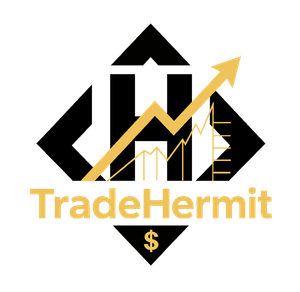The Ackman Warning That Sparked a Storm
In February 2025, famed hedge fund manager Bill Ackman dropped a cryptic bombshell: “If I were still shorting stocks, I’d short UNH.” For someone regarded as a Buffett-style value investor, this wasn't just market noise—it was a red flag. Since then, UnitedHealth (UNH), once a pillar of defensive investing, has found itself under siege: from a shocking CEO attack to ESG controversies, earnings disappointments, and DOJ investigations. But does this turmoil reflect a crumbling core—or a market that has grossly mispriced transient risks?
Part I: Timeline of a Crisis – From Flashpoint to Systemic Panic
- Trigger Event – CEO Shooting Sparks Public Outrage
On Dec 4, 2024, UNH’s CEO was shot outside a Manhattan hotel. The attacker, who posted about “denied healthcare for the poor,” triggered a nationwide firestorm over UNH’s reputation for claim denials. - Tipping Point – Viral Video, ESG Backlash
In January, a viral video showed a plastic surgeon being pulled from the OR mid-surgery to justify a patient’s inpatient status to UNH. This symbolic clash of profit vs. care deeply resonated with ESG investors, questioning UNH’s social license to operate. - Financial Shock – Q1 Earnings Miss & Profit Warning
On April 17, UNH stunned markets with Q1 results showing a sharp spike in medical costs and slashed full-year guidance. The stock crashed 22% in one day—its worst drop in 25 years. - Compounding Pressure – Resignation, DOJ Probe, Ackman’s Echo
CEO resignation followed. A dual DOJ civil/criminal investigation was launched into UNH’s Medicare Advantage business. While Ackman confirmed he had no position, his public critiques intensified market fears.
Part II: Crash Dissected – Transient Shock or Structural Risk?
1.Short-Term Shocks (Likely Overpriced):
- Temporary Claims Spike: Q1 medical loss ratio rose from 84.3% to 84.8%, due to pent-up demand post-COVID, especially among elderly. This is likely non-recurring.
- Policy Headwinds: CMS’s 2024 V28 model change pressures profits but could reverse in 2026.
- DOJ Probe: While serious, historical outcomes of similar probes are usually fines (~1–2% of revenue)
2.Long-Term Fundamentals (Largely Intact):
- Unmatched Scale: Over 150 million members across business lines.
- Optum Flywheel: Deep vertical integration in claims, care delivery, and data. Processes 15% of all U.S. medical claims.
- Robust Financials: Q1 adj. net income still $5B+. Free cash flow stable.
- Insider Confidence: CEO and CFO have recently bought ~$30M in stock
Part III: Signs of a Turnaround
Short-Term Tailwinds:
- CMS Reversal: 5% payment increase in 2026 Medicare Advantage—largest in a decade.
- M&A Synergies: Optum’s 2024 acquisitions expected to yield $2B cost savings by late 2025.
Mid-Term Growth Vectors:
- Value-Based Care: Adding 650k new patients under Autumn Health’s preventive care model.
- AI Scaling: Already automating 20% of claims; 20% cost efficiency gains expected to broaden.
Long-Term Upside Levers:
- Demographic Tailwind: 10,000 Americans turn 65 daily; huge Medicare Advantage runway.
- GLP-1 Impact: UNH’s Altamax distributes ~40% of weight-loss drugs. Long-term health cost savings could add $8–10 EPS.
- Medicaid Privatization: Over 30 states face Medicaid shortfalls; UNH winning ~35–40% of contracts.
The Optum “Data Dividend”:
- Predictive Analytics: Hospitalization risk prediction (78% accuracy)
- Drug Optimization: Smart drug protocols now generate $500M in incremental revenue.
Part IV: Investment Setup – Ahead of August 5th Earnings
At ~11x forward PE, UNH trades at its lowest valuation in a decade—pricing in worst-case regulatory and reputational risks. Yet if earnings stabilize, DOJ risk is capped, and policy tailwinds materialize, rerating potential is significant.
Key Catalysts:
- August 5 earnings: Watch MLR trend, guidance revision, and Medicare performance.
- Insider activity & hedge fund flows: Are institutions buying the dip?
Conclusion: From Crisis to Opportunity?
UNH’s current trajectory echoes past sentiment-driven crashes in quality names: Netflix in 2022 or CrowdStrike in 2024. In each case, a short-term narrative overwhelmed long-term fundamentals—until results forced a reevaluation.
In investing, it’s not about predicting the storm. It’s about identifying who’s building shelter—and who’s quietly loading up before the sun returns.
UNH may be facing a trust crisis, but its fundamentals remain formidable. This may not be the end—but the beginning of a deep value reset.
